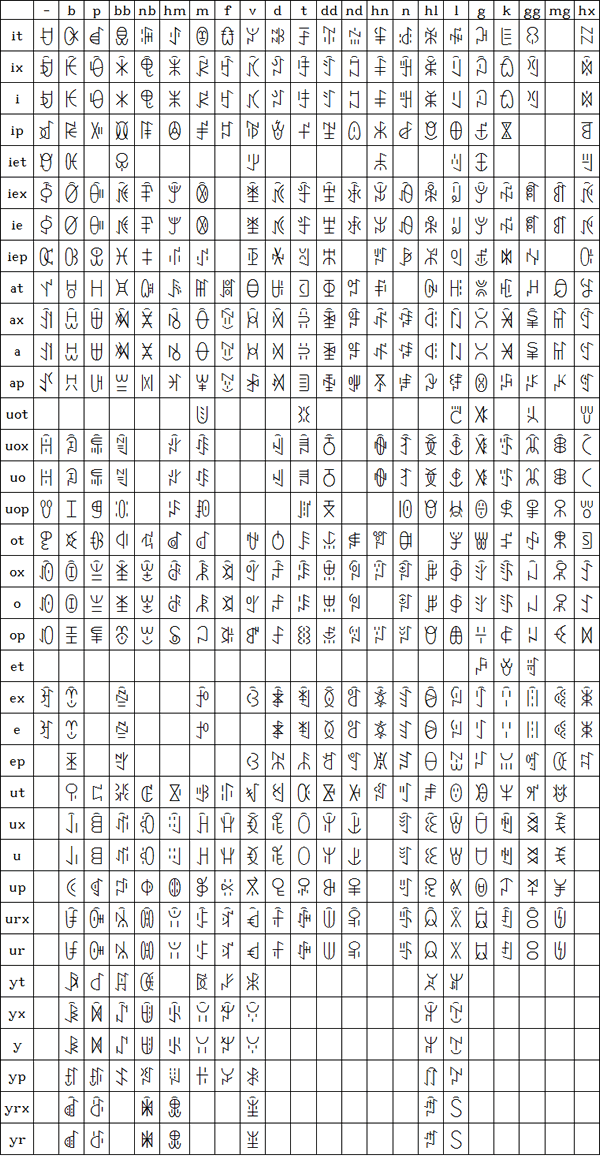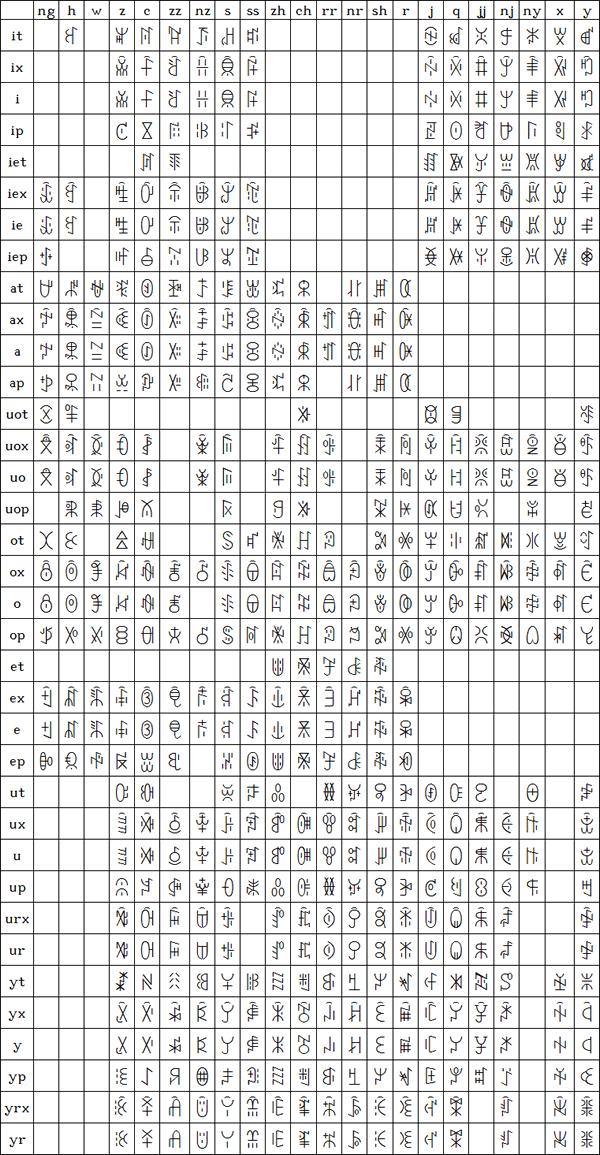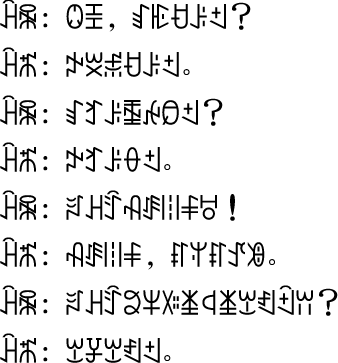The syllabary was used for religious, magical and medical texts for many centuries mainly by priests, or pimu. Until 1975 there was no standardised Yi script and there was considerable regional variation in how the characters were written.
The standardized Yi script uses a total of 1,165 characters to represent Liangshang Yi. 819 of those characters are used to write all the possible syllable/tone combinations for the three basic tones (high level, mid level and low falling), while another 345 represent syllables with the secondary high tone.
Notable features
- Type of writing system: syllabary - the largest syllabary ever to be standardised
- Direction of writing: left to right in horizontal lines
- Used to write: Yi/Lolo
- Each character represents one syllable. Many characters have up to three separate forms to represents the three different tones of spoken Yi.
- Yi is also written with the Latin alphabet
Used to write:
Yi, a member of the Loloish branch of the Tibeto-Burman language family spoken by about 4 or 5 million people in the Chinese provinces of Sichuan, Yunnan, Guizhou and Guangxi.Yi, which is known as 彝 in Chinese and Lolo in English, has six main dialects: Northern Yi (ꆈꌠ - Nuosu), Western Yi (Lalu), Central Yi (Lolopo), Southern Yi (Nisu), Southeastern Yi (Nasu) and Eastern Yi (Nasu), with limited mutual intelligibility between them.
Northern Yi has the most speakers - about 2 million - and is spoken south-western Sichuan, mainly in the Liangshan Yi Nationality Autonomous Region (凉山彝族自治州), and in Northern Yunnan.
Standardized Liangshan Yi Script


Download this chart (Excel format)
Source: http://www.babelstone.co.uk/Yi/script.html
Sample texts

Translation
Muxhlie : Comrade, where do you come from?Muxrryr : I am originally from Xide.
Muxhlie : Are you Yi or Han nationality?
Muxrryr : I am Yi.
Muxhlie : Your hometown is a peaceful place I suppose.
Muxrryr : Quiet and peaceful.
Muxhlie : Have you had a good harvest there this year?
Muxrryr : We had a bumper harvest.
Source: http://www.babelstone.co.uk/Yi/lesson_05.html
Source: http://unicode.org/udhr/assemblies/first_article_all.txt
Transliteration (by Shawn Kilpatrick)
Nbo ma mu viex jjux jjo, nzy ddu i qix jjy yyx mu jjo sat. Nbo wox ngop mge si nip bbop hxie nyi jjo, ddix ap bbop hmap zyt hnip mop mu jjo tat xi.Translation
All human beings are born free and equal in dignity and rights. They are endowed with reason and conscience and should act towards one another in a spirit of brotherhood.(Article 1 of the Universal Declaration of Human Rights)
Latin alphabet for Yi (Yi Pinyin)
A method of writing the Liangshang dialect of Yi with the Latin alphabet was proposed in 1956, and a standardised version of the Yi script was devised in 1974. It was used experimentally from 1975, and offically from 1980.
Links
Information about the Yi script and languagehttp://www.babelstone.co.uk/Yi/
http://en.wikipedia.org/wiki/Yi_script
http://www.youtube.com/watch?v=m43KpZ_90d4
http://en.wikipedia.org/wiki/Nuosu_language
Free Yi fonts
http://www.wazu.jp/gallery/Fonts_Yi.html
Information about the Yi people (in Chinese)
http://www.yizuren.com
No comments:
Post a Comment
Note: Only a member of this blog may post a comment.